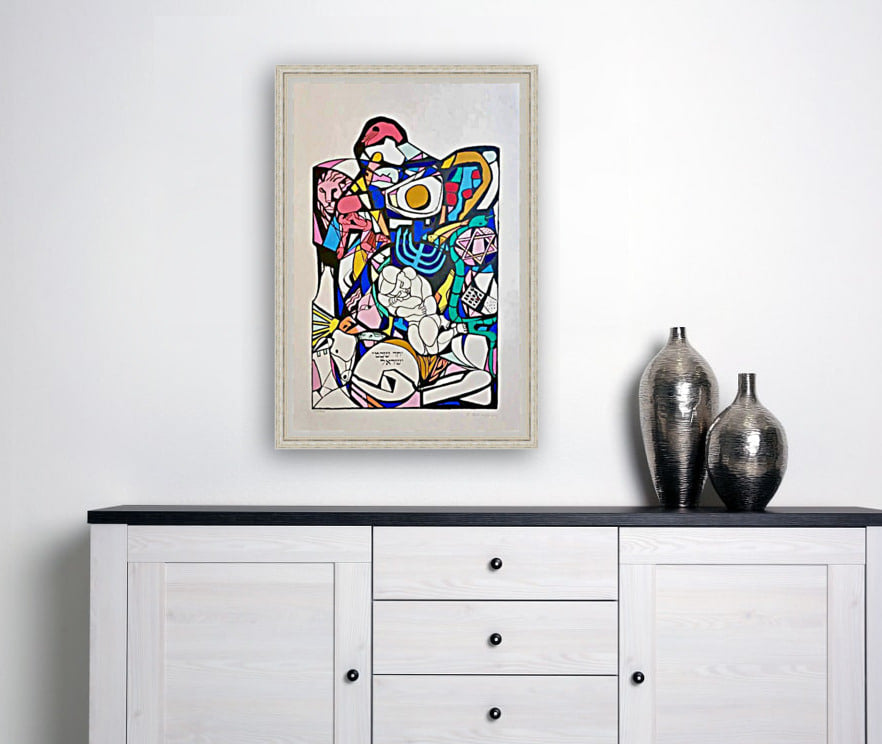Hedonism Gallery
Ernst Neizvestny - Twelve Tribes of Israel (1978)
Ernst Neizvestny - Twelve Tribes of Israel (1978)
Import duties, taxes, and fees are the responsibility of the recipient and payable upon delivery.
在庫切れ
受取状況を読み込めませんでした
- Make Offer
- Verified
- Worldwide Shipping
Ernst Neizvestny Original RARE Silkscreen "Twelve Tribes of Israel" (1978)
Ernst Neizvestny's Twelve Tribes of Israel (1978) is a rare and unique silkscreen print. This artwork is a stunning representation of the twelve tribes of Israel. The vibrant colors and intricate details make this piece a must-have for any art collector.
This silkscreen print is a limited edition, making it a highly sought-after piece. It is signed and numbered by the artist, adding to its value. The artwork is printed on high-quality paper, ensuring its longevity.
Ernst Neizvestny's Twelve Tribes of Israel (1978) is a stunning piece of art that will be a beautiful addition to any home or office. It is a rare and unique piece that will be treasured for years to come.
- Year: 1978
- Original Silkscreen, unframed.
- Limited Edition of 300
- Hand signed and numbered in pencil by artist.
- Good Condition
- 25 x 37 in (63,5 x 94 cm)
Screenprint, Silkscreen, Serigraph
These three words are used interchangeably in the printmaking world and they all refer to the same process. Screenprinting is a stencil printmaking process in which ink is pushed through a fine screen onto a surface beneath. That surface could be almost anything, but let’s use fine art paper as a reference to fine art prints. Fine art screenprints are sometimes referred to as serigraphs to differentiate them from industrialized screenprinting processes like printing on t-shirts with an automated machine. In a fine art screenprinting process, a sheet of high quality archival paper is placed under a framed screen and thick, paint-like ink is poured along the edge of the frame. A squeegee is then drawn from back to front, dragging the ink across the stenciled surface and pushing the ink through the stencil onto the paper beneath. Each color in a screenprint requires a different screen.
The type of material used for the mesh of a screen is usually a fine silk bolting cloth (hence the name ‘silkscreen’), or more popularly a synthetic, like nylon or polyester (which is why the name ‘silkscreen’ is no longer accurate for most contemporary practices). The mesh is stretched onto a frame, which is then hinged to a table, which lets the artist maintain the alignment of his color layers. If there is an edition of 100 prints being made, each print in the entire edition is built one layer at a time, so that one color layer screen is used on all 100 before moving on to the next color.
Screenprinting itself has been a recognizable printing process for centuries, with some examples in China dating back to the Song Dynasty (960–1279 AD). The use of screenprinting as a modern artist medium began in 1938 when a group of artists in New York (known as the Federal Art Project) started working with the method of screenprinting and really developed its potential. They were the group that formally coined the term serigraphy and later formed the core of the National Serigraph Society, which actively promoted the art form for over twenty years.
Share






Have questions or want a special price? Write to us — we’re here to help.
We will get back to you as soon as possible. If you don’t get a response within 12 hours, please check your Spam folder.






